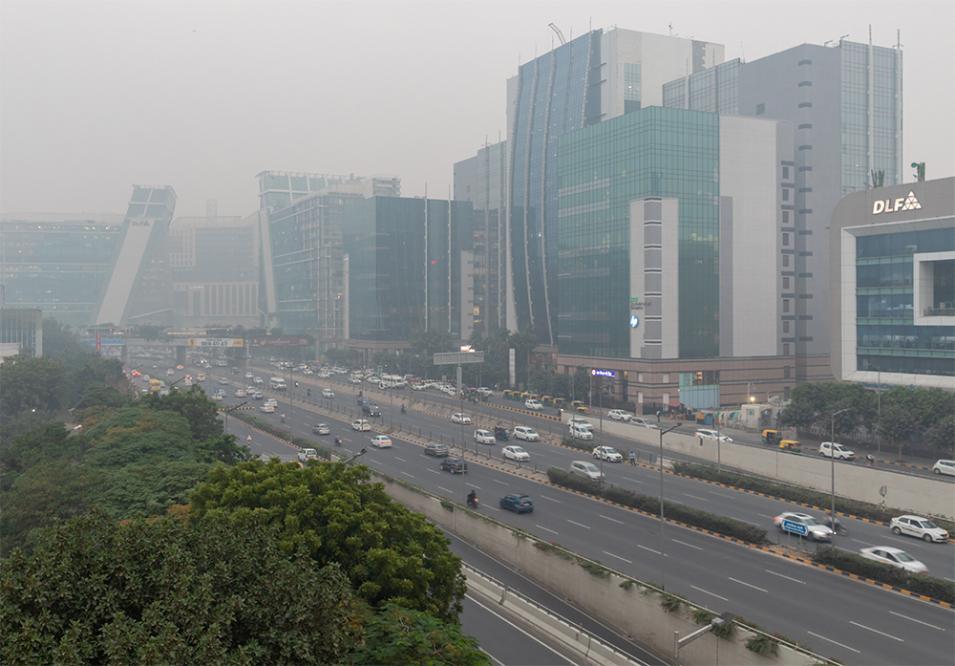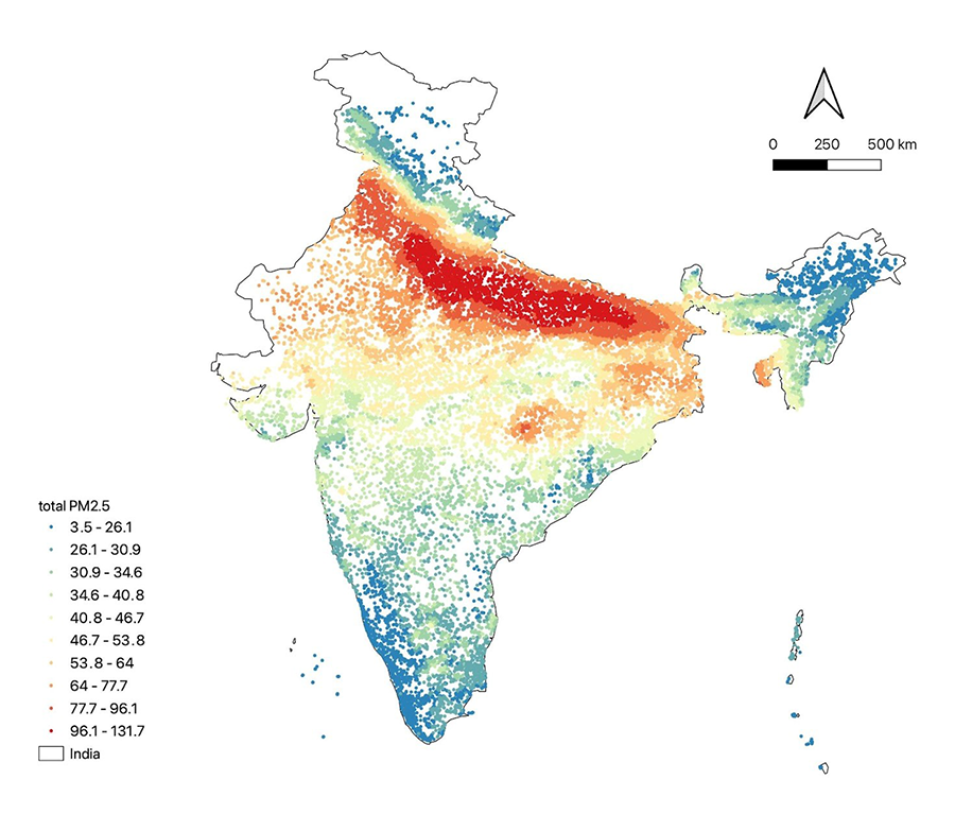On November 6, 2023, air pollution in Delhi, India, hit an all-time high and then went off the charts. On that day, Delhi's air quality index (AQI) surpassed 500, the scale's maximum level. The pollution sent overwhelming numbers of children to local emergency departments with breathing problems and Delhi officials closed their schools.
The AQI measures ground-level ozone, particles from dust and biofuel combustion and other sources, carbon monoxide, sulfur dioxide, and nitrogen dioxide pollutants. AQI levels of 0-50 are good, 50-200 become increasingly unhealthy for various people, and levels above 200 place everyone at significantly increased risk for illness or worse. AQI levels in Delhi and across India routinely surpasses World Health Organization (WHO) limits for healthy breathing, contributing to the country’s rising rates of cardiopulmonary illness and premature death.
To help clear India's air, NASA and world researchers are using the agency's satellite and ground-based data to understand, monitor, and predict the country's air pollution processes, levels, and effects.
NASA atmospheric scientist Dr. Pawan Gupta is an expert in India's air pollution and specializes in using satellites to monitor air quality.
"India's air pollution sources and seasonality vary across the country,” said Gupta. "The topography and weather patterns in Northern India favor the development of high levels of pollution, especially in areas bordered by the Himalayan mountains and the plains and during the winter season."
During the cold, dry winter months, cool air in the high mountains forms a low-level boundary layer in the atmosphere. This layer traps particulates near the surface produced by agricultural slash and burn fires and the burning of fuels for cooking and heating, which then raises air pollution levels. In warmer months, winds from the plains and deserts blow dust into the air and make it harder to breathe. In the more densely populated and warmer southern areas, weather and burning biofuels contribute to creating air pollution; however, dust from bare exposed ground along roadways along with smog from industry and transportation play the greatest role in degrading the region’s air quality throughout the year.
Seeing into the Smog
"When we talk about air quality, we generally use two types of data: aerosols and gases," said Gupta. "Over the past 25 years, Indian and other researchers have been using these air quality data to understand the processes, sources, [and] seasonal variability of pollution."
NASA has many datasets from an array of sensors related to air quality that are freely and openly available through Earthdata Search and the agency's webpages. One key source of data is the Moderate Resolution Imaging Spectroradiometer (MODIS) instrument aboard NASA's Aqua and Terra satellites, which provides measurements for aerosol and other data products useful for air quality research. Terra also carries the Multi-Angle Imaging Spectroradiometer (MISR), which records aerosol particle data. The Visible Infrared Imaging Radiometer Suite (VIIRS) aboard the joint NASA/NOAA Suomi National Polar-orbiting Partnership (Suomi NPP), NOAA-20, and NOAA-21 satellites provides similar, next-generation data. Along with satellite-acquired data, NASA offers on-the-ground data through the global AErosol RObotic NETwork (AERONET) of linked ground stations that provide aerosol measurements every 5-15 minutes. Among its more than 600 active ground stations, AERONET includes nine units in India.

